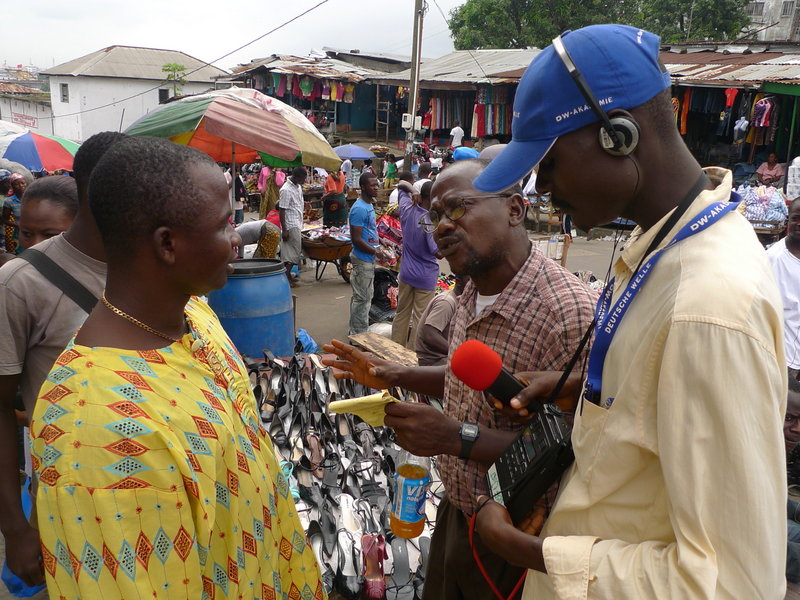Beeping horns and barking dogs: how to record audio in noisy places

In some countries and cultures, it’s very hard to find or create quiet places to record interviews. The vibrant street life may be so noisy that it’s audible from inside buildings, or the extreme climate may cause sounds such as pelting rain or creaking roofs expanding in the sun.
Outside, everything from barking dogs to street hawkers and blaring music can mean it’s impossible to find a quiet corner. As a journalist, you’ll need to work around this – after all, it’s not possible to ask hundreds of motorists to stop tooting!
OnMedia’s Lesley Branagan has tips to help you get good clean audio that will edit up nicely, no matter what the situation.
Indoor environments
- When you first make contact with your interviewee, ask them if it’s possible to do the interview in a room of the building that doesn’t face the street.
- If all the rooms get a lot of street noise, seat your interviewee away from the window, and seat yourself so that you have your back to the window. That way your microphone won’t be pointed at the source of all the noise.
- Close any windows and curtains in the room to deaden any sound.
- Use a directional microphone (shotgun or cardioid) or set your usual microphone onto a directional setting, so that you don’t pick up background sound from all directions.
- Ask for the airconditioner or fan to be turned off because it just sounds terrible. If it’s exceptionally hot and the interviewee is still reluctant, I often suggest breaking the interview into two sections, and turn on the AC/fans for a few minutes in the middle to cool down. Most interviewees will agree to this compromise, especially if you frame the uncomfortable heat as something that you will ‘endure together’ to get a good outcome.
- In many countries, doing an interview in someone’s home means the kitchen is very close by and is often in use. Request that no one uses the kitchen during the interview, as you don’t want the sounds of clattering saucepans as an accompaniment to your interview.
- Having a journalist visit can often attract lots of visitors but these can make editing your audio a problem. Don’t be afraid to close windows and front doors. If a colleague or family member insists on sitting in on the interview, advise them: “I will need you to be very quiet during the interview and not to move at all.”
- Make sure you record plenty of background atmosphere, which matches the atmosphere of the room during the interview. For example, if there were lots of cars tooting at a distance outside, try to record the same sounds, but without your interviewee speaking this time.
Outside
If you are recording an interview outdoors, for example, with a shopkeeper in a noisy bazaar or a protester at an election rally, there is no way you can avoid noise. On the plus side, a market or village square’s dense sound atmosphere contributes to the character of your documentary and transports the listener to this vibrant scene. But if it’s too loud, your interviewee just won’t be heard which defeats the point of making the recording.
- Try to find a place where the background noise is at a consistent level behind your interviewee. If there are no jumps in the background levels, it is easier for the listener to tune their ears to focus on the speaker.
- Position yourself with your back towards the source of the noise – that way your microphone is facing away from the noise.
- Moving to the back of a market stall or around a corner can sometimes make a world of difference in dampening the sound.
- Try to do your interview away from groups of people talking or shouting, and away from noises with sudden increases and decreases, such as generators or children.
- If sudden noises happen during your interview and drown out your interviewee’s voice, then that portion of your recording won’t be usable. You will need to request the interviewee to go back and repeat the last sentence. “I’m sorry to interrupt, but I’ll have to get you to repeat that. You were saying?”
- Make sure you record some good atmos of the background sound by itself, and you can use this to patch over any edits and make the background sound appear seamless. Unexpected sounds like sudden shouts may add a lot of character to your piece, but try to record those separately so you can have more control when you are editing.
- Be aware of whether the natural atmos changed over the duration of the interview. For example, did the bazaar go from being very bustling to very quiet when people started their prayers? If so, you need to try to record both types of sounds. Did the background generator sound stop during the interview? If this is the case, you’ll need to record the same generator sound later, and then place it underneath the second part of the interview when you are editing, making sure you keep the levels consistent or fading out the background sound slowly.
For more about recording audio, take a look these onMedia posts:
Top 5 mistakes recording audio
Digital audio recorders for journalists: what to look for
Six tips for selecting powerful voice clips
Written by Lesley Branagan, edited by Kate Hairsine



